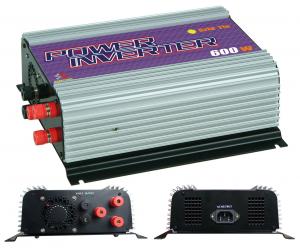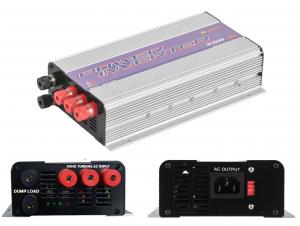Hybrid Grid Tie Solar Inverter
Hybrid Grid Tie Solar Inverter Related Searches
Led Light Bulbs For Ceiling Fixtures Led Lamps For Ceiling 42 In Ceiling Fan With Light Parts For Light Fixtures Light Projector For Christmas Grill With Led Light Bar Hanging Lights For Kitchen Bar Ceiling Lights For Sitting Room Ceiling Brackets For Lights Ceiling With Led LightsHot Searches
Aluminium Wire Mesh Manufacturers India Ceiling Fan Lowest Price Aluminium Scaffold Planks Sale Aluminium Walkway Mesh Prices Aluminum Bar Stock For Sale High Mast Light Price List Solar High Mast Light Specification High Mast Light Specification 6061 Aluminum Bar Stock Price Aluminum Bar Stock Price Stage Light Price Solar Inverter Fault Light Led Light Manufacturers Aluminum Round Bar Stock Sizes Aluminum Round Bar Stock Near Me Ceiling Fan Lowest Price Aluminum Flat Bar Stock Near Me Aluminum Bar Stock Sizes Aluminum Bar Stock Suppliers Aluminum Bar Stock Near MeHybrid Grid Tie Solar Inverter Supplier & Manufacturer from China
Okorder.com is a professional Hybrid Grid Tie Solar Inverter supplier & manufacturer, offers integrated one-stop services including real-time quoting and online cargo tracking. We are funded by CNBM Group, a Fortune 500 enterprise and the largest Hybrid Grid Tie Solar Inverter firm in China.Hot Products
FAQ
- No, a solar inverter is designed to convert DC power generated by solar panels into usable AC power for household or grid consumption. It cannot be used directly with DC power sources.
- Power factor correction can greatly improve the performance of a solar inverter by ensuring that the power drawn from the grid is utilized efficiently. By correcting the power factor, the inverter reduces the reactive power component and increases the power factor closer to unity. This reduction in reactive power results in a more efficient utilization of the available power, leading to increased energy conversion efficiency and reduced losses in the inverter. Additionally, power factor correction helps in complying with grid regulations and prevents penalties or restrictions imposed by utility companies.
- Yes, a solar inverter can be used with different types of grid support functions. Solar inverters are designed to convert the direct current (DC) produced by solar panels into alternating current (AC) that can be fed into the electrical grid. They can be equipped with various grid support functions like reactive power control, voltage regulation, and frequency control. These functions enable solar inverters to adapt to different grid requirements and contribute to grid stability and reliability.
- A solar inverter handles variations in solar irradiation by continuously monitoring the amount of sunlight received and adjusting the conversion of direct current (DC) power generated by the solar panels into alternating current (AC) power accordingly. It does this by employing maximum power point tracking (MPPT) algorithms that optimize the power output from the panels, ensuring maximum efficiency regardless of the fluctuations in solar irradiation.
- Yes, a solar inverter can be used with different types of communication interfaces. Many modern solar inverters are designed to be compatible with various communication protocols such as Wi-Fi, Ethernet, RS485, and Zigbee. This allows for easy integration and monitoring of the inverter with different types of communication systems and devices.
- Yes, a solar inverter can be used with solar-powered electric fences. A solar inverter is responsible for converting the direct current (DC) generated by solar panels into alternating current (AC) that can be used to power various devices, including electric fences. This allows for an efficient and sustainable solution to power electric fences using solar energy.
- The maximum input voltage that a solar inverter can handle varies depending on the specific model and manufacturer. However, in general, most solar inverters can handle input voltages in the range of 150 to 600 volts DC.
- Through its built-in control mechanisms and advanced technology, a solar inverter is specifically designed to handle voltage and frequency variations resulting from switching operations. When connected to the grid, the solar inverter actively monitors the grid's voltage and frequency, and adjusts its operation accordingly to ensure stability and safety. When voltage variations occur due to switching operations, a solar inverter typically employs a voltage control mechanism. This mechanism continuously monitors the grid's voltage level, and accordingly adjusts the inverter's output voltage to match the grid voltage. If the grid voltage exceeds or falls below a specific threshold, the inverter automatically compensates by adjusting its output voltage to maintain a stable level. Similarly, for frequency variations caused by switching operations, a solar inverter utilizes a frequency control mechanism. This mechanism constantly monitors the grid's frequency and adjusts the inverter's output frequency to match the grid's frequency. If the grid's frequency deviates from the standard, the inverter promptly responds by adjusting its output frequency to ensure synchronization with the grid. To achieve precise control, solar inverters often integrate advanced digital signal processing algorithms and sophisticated control systems. These algorithms and control systems analyze the voltage and frequency signals from the grid, and based on predefined parameters, swiftly make adjustments to the inverter's output. This ensures compatibility with the grid and promotes seamless integration. Ultimately, the primary objective of a solar inverter is to seamlessly integrate with the grid, providing a stable, reliable, and efficient power supply. By effectively managing voltage and frequency variations resulting from switching operations, the inverter plays a crucial role in maintaining the overall stability and resilience of the grid. This allows for optimal utilization of solar energy and contributes to a sustainable energy future.














































